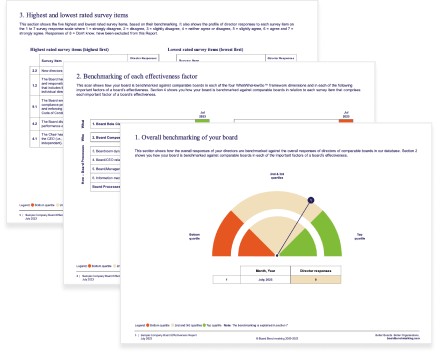Insync and Board Benchmarking have partnered with the Australian Institute of Health Executives (AIHE) to develop a new (CLEAR) framework for Clinical Governance Committee Effectiveness. The framework draws upon AIHE’s expertise and experience in Australian and global regulations and standards of best practice in clinical governance. It also reflects Insync and Board Benchmarking’s decades of experience in best board and committee governance practices in Australia and globally.
In a healthcare and care landscape marked by complexity, reform, and rising community expectations, Clinical Governance Committees and boards must play a more active and effective role in overseeing the safety, quality, rights, and outcomes of those they serve. The CLEAR Framework has been developed to meet this need—a practical, inclusive, and evidence-informed model for clinical governance across the health, aged care, and disability sectors.
CLEAR stands for:
- Committee Purpose, Role & Composition
- Leadership, Dynamics & Operations
- Excellence in Quality & Safety
- Assurance of Workforce & Practice
- Respecting Consumer Voice & Rights
The CLEAR framework provides both a structure and a mindset—helping clinical governance committees move beyond compliance to purposeful oversight, strategic insight, and consumer-centred action. It is supported by a validated self-assessment tool that helps committees measure and improve their performance across each domain.
Why the CLEAR framework works so well
What makes CLEAR so effective is its versatility, completeness, and clarity.
- Versatility – It is designed for use across diverse care settings, from acute hospitals and residential aged care to community health and disability supports. The language is inclusive, and the principles are applicable to any setting where quality, safety, and human rights are essential.
- Completeness – CLEAR integrates the best elements of major clinical governance frameworks, including those from Australian Safety and Quality for Health Care, Safer Care Victoria, the NHS, New Zealand’s HQSC, and the NSQHS and NDIS Practice Standards. It goes further by ensuring that committee structures, dynamics, workforce assurance, and consumer voice are given equal weight.
- Clarity – The framework is simple to communicate, straightforward to apply, and easy to embed into board or committee processes. Each domain contains a focused set of measurable elements—making it ideal for self-assessment, reporting, development planning, and benchmarking.
1. Committee purpose, role & composition
A committee without a clear purpose or the right mix of expertise cannot provide meaningful oversight of care quality, safety, or consumer outcomes. This domain is critical because it establishes the foundation for effective governance—ensuring that the committee’s mandate, scope, and authority are well understood and regularly reviewed. When roles and composition are clearly defined, the committee is positioned to make strategic, accountable, and well-informed decisions.
2. Leadership, dynamics & operations
Strong leadership and effective meeting dynamics are essential for turning information into action. This domain matters because it determines whether the committee creates a space for respectful challenge, focused discussion, and shared responsibility. Without clear leadership, disciplined operations, and productive relationships with management, even the best data or intentions can fail to deliver meaningful impact or oversight.
3. Excellence in quality & safety
High-quality, safe care doesn’t happen by chance—it requires consistent, informed governance. This area is vital because it enables the committee to identify early warning signs, monitor risks, and support system-wide learning from incidents and audits. Excellence in quality and safety oversight protects consumers from harm, drives continuous improvement, and reinforces a culture of accountability across the organisation.
4. Assurance of workforce & practice
People are at the heart of care, and their competence, conduct, and support directly affect safety and outcomes. This domain is important because it gives the committee visibility of whether the workforce is appropriately trained, credentialed, and led. By overseeing workforce risks, development, and ethical practice, governance helps ensure services are safe, person-centred, and sustainable.
5. Respecting consumer voice & rights
Quality care is not just clinically effective—it is also respectful, inclusive, and responsive to individual needs. This domain matters because it ensures the committee centres the lived experiences, rights, and feedback of those who use the service. By embedding consumer voice into governance, organisations build trust, improve relevance, and ensure care is delivered with dignity and fairness.
The future of governance is CLEAR
As clinical governance continues to evolve in response to regulatory change, royal commissions, and global expectations, committees need frameworks that are practical, holistic, and future-proof.
The CLEAR Framework answers this call. It empowers committees to ask the right questions, have the right conversations, and make the right impact. It shifts the lens from technical compliance to meaningful leadership and from process to purpose.
Whether you’re governing a major health service, a rural aged care facility, or a disability provider, CLEAR will help you lead with clarity, care, and confidence.
To access the CLEAR Framework tools or explore custom self-assessment options, contact us for further information.



